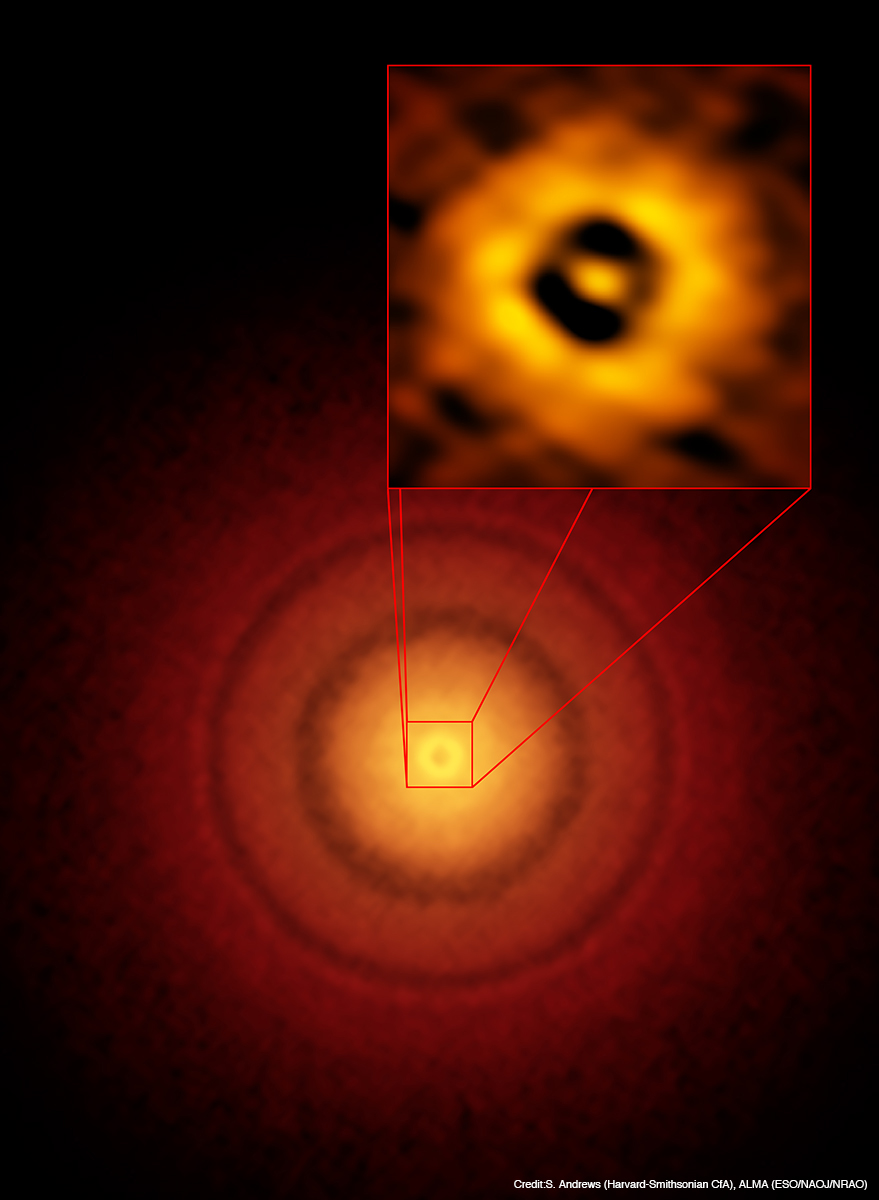A Dust Disk Surrounding TW Hydrae
Astrophotography・

ALMA captured a high resolution image of a dust disk surrounding TW Hydrae, a young star about 10 million years old. Located 175 light-years away from the Earth, this star is one of the closest objects where planets are about to be born. The two dark gaps carved in the disk are approximately same distances from the central star as Uranus’ orbit (20 astronomical units) and Pluto’s orbit (40 astronomical units), respectively. When we enlarge the region around the central star, we find a gap whose radius is about one astronomical unit, which is the radius of the Earth’s orbit. This is the first time that we could see a site of planetary formation this close to the central star. This is a big step towards understanding the formation of a planetary system similar to our Solar System.
Text by: Masaaki Hiramatsu (NAOJ Chile Observatory)
It looks like here we might be able to see a Site of Planet Formation
Among planetary formation researchers, TW Hydrae is “a super-celebrity celestial object.” A lot of research using various approaches has been performed to understand the structure of the disk surrounding this star and the planetary formation believed to be occurring there. Therefore, when I saw the image released by ALMA, in which it looks like we might be able to see just that, I was shocked and felt like an electric current was running through me. It was surprising that we could see small details, even though the image captures a wide range, from the center of the disk to the periphery. And multiple sharply captured “gaps” make us suspect the existence of planets. In addition, ALMA revealed the existence of the “snow line” in this disk through direct observations. It is an epoch-making discovery about the planetary formation process and a milestone observation in star and planetary formation research.
Text by: Hideaki Fujiwara (Subaru Telescope, NAOJ)
Translation by: Hiroko Tsuzuki and Ramsey Lundock (NAOJ)
Image Data
| Object | TW Hydrae |
|---|---|
| Telescope | ALMA |
| Credit | S. Andrews (Harvard-Smithsonian CfA), ALMA (ESO/NAOJ/NRAO) |